Book History at the Turnbull
About this guide
Use this guide to help with your research into printed and manuscript books in the Alexander Turnbull Library collections and further afield.
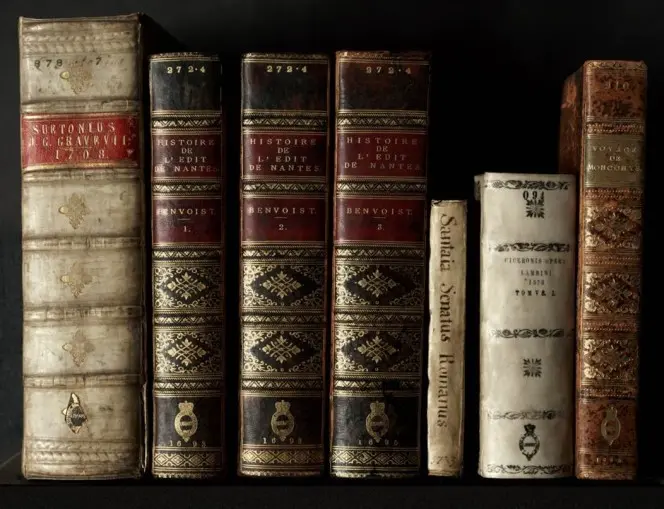
Selection of books in the Rare Books and Fine Printing Collection, Alexander Turnbull Library.
What is book history?
Book history is the study of books as material objects and how they came to be as they are.
It concerns
the way authors communicate with their readers, how they relate to their publishers and booksellers, and how texts were received by readers
the making of books, including paper making and papermakers, bookbinding and binders, scribes, illuminators, printers, engravers, and illustrators
the distribution of books via booksellers, libraries, auction sales and subsequent owners.
Book history considers each physical object as a unique entity with its own story to tell.
The term ‘book’ can mean any form of text that is made public or distributed in any way, from Babylonian clay tablets and Egyptian papyrus rolls, through manuscript books, printed books and ephemera, right up to electronic texts of the 20th and 21st centuries, but for the purposes of this guide, it is restricted to printed (i.e. printed on a printing press whether by hand or machine) and manuscript texts.
Accessing resources from this guide
This guide focuses on book history resources which aid research into aspects of printed and manuscript books in the Alexander Turnbull Library collections, although some of the resources may be applied to research into books held elsewhere. All physical resources mentioned below are held onsite in the Library’s collections. Search for them using the National Library Catalogue and Tiaki, or search this site – it's particularly useful when you are looking for images.
Each site will give you different results, so try searching them all.
To view material in the Library’s Wellington reading rooms, you will need to register
Getting started
Resources in the Alexander Turnbull Library
The Alexander Turnbull Library is one of the best resources in New Zealand for providing the raw or primary research material for this topic.
The Rare Book Collection includes around 20,000 printed and manuscript items dating from the 12th century to hand-printed works of the 21st century.
There are around 30 Named Collections, which are the personal libraries of individuals acquired over the years.
The Turnbull Library General Collection contains the essential supporting background reference material, but is also a research collection of 19th century printed material in its own right.
What to read first
David Pearson’s Books as history: The importance of books beyond their texts, rev. ed. (London: The British Library, 2011)
Record page
A very readable and useful introduction to the study of books as objects. Well over 200 illustrations accompany its concise and well-written text.
Roderick Cave and Sara Ayad, A history of the book in 100 books (London: The British Library, 2014)
Record page
Provides a selection of books each representing a category in the story of the development of the book from the earliest cave paintings to the ebook. Well illustrated and with a short glossary.
Oxford companion to the book, edited Michael F. Suarez and H.R. Woudhuysen. 2 vols (Oxford: OUP, 2010)
Record page
Includes succinct descriptions on topics connected to book history with references for further reading. The dictionary component is preceded by a series of in-depth essays on: writing systems, the sacred book, the ancient book, the history of the book in Byzantium, the European medieval book, the European printing revolution, the book as a symbol, the transmission of Jewish knowledge through manuscripts and printed books, missionary printing, paper, technologies of print, economics of print, the manuscript after the coming of print, printed ephemera, children’s books, history of illustration and its technologies, bookbinding, theories of text, editorial theory and textual criticism, and the electronic book. Also includes a series of potted histories of the book in countries around the world, including New Zealand.
When you need a quick reference tool for various terminologies, use Bookbinding and conservation of books: A dictionary of descriptive terminology.
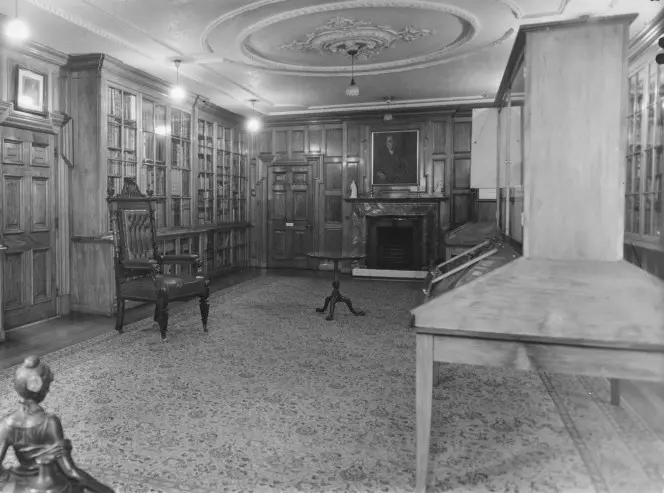
Exhibition room in the Alexander Turnbull Library, Bowen Street (formerly the home of Alexander Turnbull), showing Alexander Turnbull’s bookcases. The portrait over the mantelpiece is J.M. Nairn’s oil of Walter Turnbull, Alexander’s father. Ref: F-38254-1/2.
The collections of Alexander H. Turnbull and the Turnbull Library
You might need to establish how and when a book entered the Alexander Turnbull Library. This section will help you to get started.
The formation of Alexander Turnbull’s library
Alexander Horsburgh Turnbull (1868-1918) collected books and other items for most of his adult life, first from his home in England, then continuing after 1892 in Wellington, New Zealand.
Following his death in 1918, his library became the property of the people of New Zealand, and the newly-founded Turnbull Library annual report of 1919 noted that the foundation collection was made up of some 30,000 bound volumes, plus a large collection of pamphlets, charts, maps, engravings, and manuscripts. The Library has continued to build the collection through donations, purchases, and Legal Deposit.
For an overview of the life and activities of Alexander Turnbull, start with:
E.H. McCormick, Alexander Turnbull: his life, his circle, his collections (Wellington, Alexander Turnbull Library, 1974)
Record page | This book in New Zealand libraries
For an overview of the Alexander Turnbull Library, see:
Rachel Barrowman, Turnbull: a library and its world (Auckland: Auckland University Press, 1995)
Record page | This book in New Zealand libraries
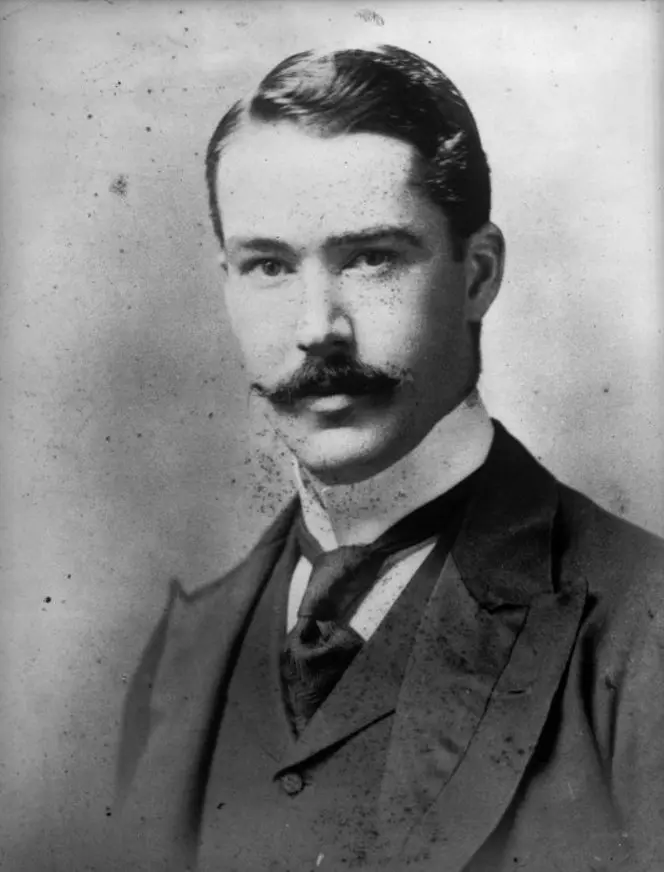
Alexander Horsburgh Turnbull, 1891. Photo by Van der Weyde. Ref: 1/2-032603-F.
Tracing books owned by Alexander H. Turnbull
Search the National Library catalogue using the grouped keywords “Turnbull, Alexander” and “former owner” to bring up a partial list of books owned by Alexander Turnbull. Not all collections have been catalogued to this depth, so this is only a first step.
Manuscript resources include Turnbull’s letter books, acquisition book, and invoices, receipts and correspondence with his book dealers.
Letter Books, 3 volumes
Record for this group including access copies (qMS-2053-2056) and originals (qMS-2050-2052)
The letter books, Alexander Turnbull’s outward correspondence, cover the years 1891-1900. The originals are too fragile to view in most circumstances, but you can access transcripts made in the 1940s.
Indices to the typescript volumes can be found at qMS-2057 or qMS-2058 (a duplicate copy).
Invoices, Receipts etc and Correspondence with Book Dealers
Record page (MS-Papers-0057-111)
These cover the years 1887-1911, but are incomplete.
Acquisition book
Record page (MSX-8822, formerly MS-2169)
Alexander Turnbull kept an acquisition book where he listed incoming books. This covers the years 1898-1902 and lists 2827 accessions. The information is in columns by Author, Title, Date of acquisition, Price, From whom purchased, and Remarks. The Remarks column sometimes includes notes on the binding or provenance.
Other resources
Bookplates
Most of Alexander Turnbull’s bound acquisitions will have one of his ten bookplates pasted inside. Be careful, as the Turnbull Library continued to paste Alexander Turnbull’s bookplates, usually the Walter Crane bookplate, into books they acquired possibly up until the 1960s. These later-added bookplates can often be recognised because the printing quality is not as sharp as the earlier ones.
Amongst the correspondence of Johannes Andersen, first Librarian of the Turnbull Library is a letter dated 28 November 1921 from Andersen to the Under Secretary of the Department of Internal Affairs in which Andersen asks for funds to allow the Government Printer to strike off 10,000 Walter Crane bookplates on good thin paper. He adds ‘The blocks of the late Mr Turnbull’s various bookplates were all taken away by Mr R.T. Turnbull, but he has left one of them – the Walter Crane plate – with me, in order that a supply may be printed off.’
From Inward & outward correspondence, 1921-1924
Record page (AAOJ 6036 Box 1b)
For more about Alexander Turnbull’s bookplates, see:
Penelope Griffith, ‘Alexander Turnbull’s bookplates’, Turnbull Library Record, vol.12/2 (October 1979): 105-112.
Record page
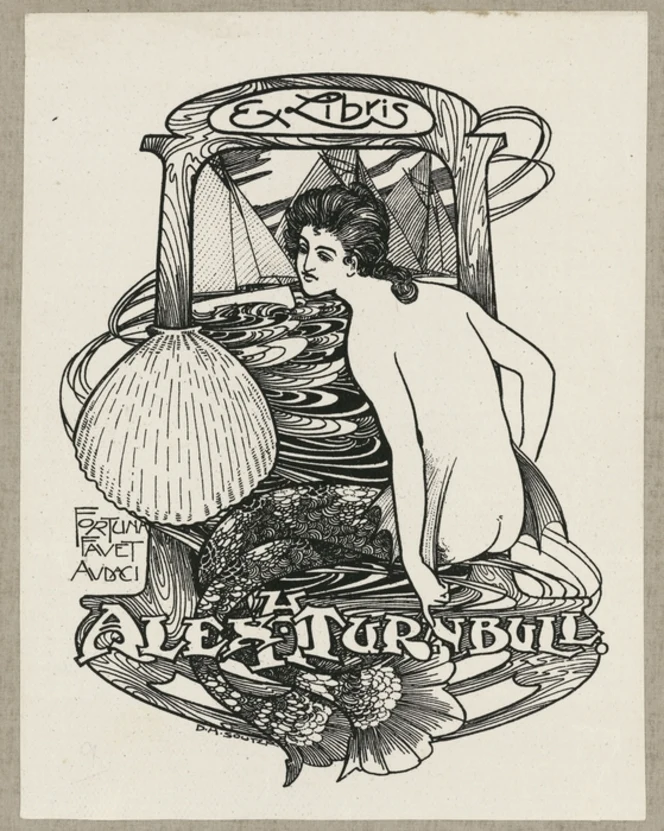
One of Alexander Turnbull’s ten bookplates. This plate was designed by David Souter c.1909. Ref: BOOKPLATES-Graham-NZ-Turnbull-1909-02.
Armorial stamps
Alexander Turnbull’s original library can also be identified by his armorial bookbindings. He used nine armorial stamps; the variants are reproduced in the Turnbull Library Record 8 (Nov 1951): 29.
See the stamps at the British Armorial Bindings database
Record page for the original dies and stamps
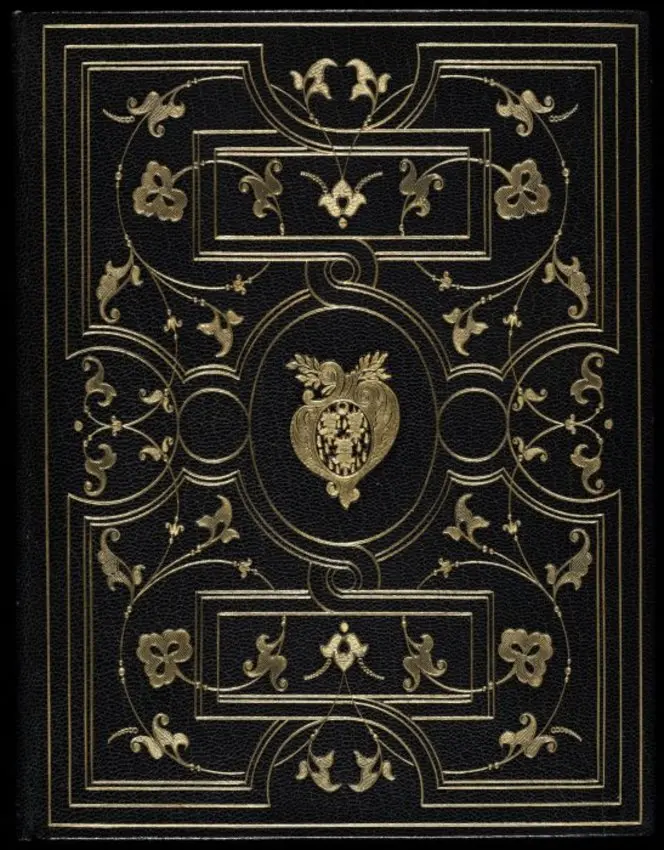
One of Alexander Turnbull’s nine armorial stamps in the centre of Mr. John Milton’s Character of the Long Parliament and Assembly of Divines, 1681. Ref: Record page.
Dealers’ catalogues
The Turnbull Library has runs of the catalogues used by Alexander Turnbull when ordering his books. These dealers’ catalogues are currently uncatalogued, but can be consulted in the Reading Room upon request.
Turnbull often used a coloured pencil to indicate items which caught his interest. Quaritch (April 1890- ) and Maggs (September 1891-) are two firms that he patronised. Early NZ catalogues with good runs include Bethunes from 1906.
Tracing acquisitions to the Library after 1918
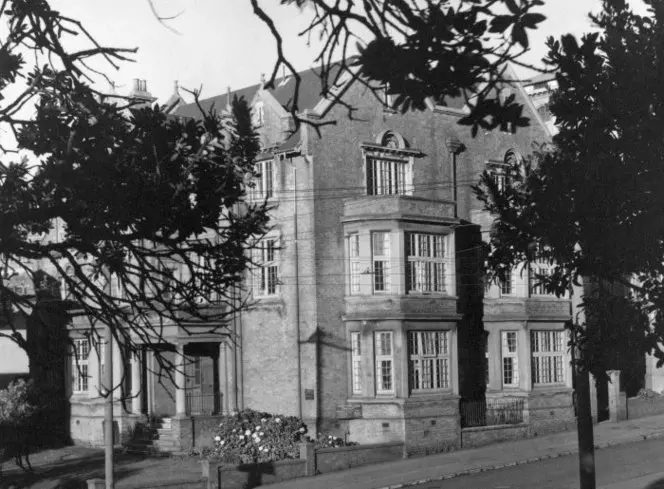
Alexander Turnbull Library, Bowen Street, c.1930 (formerly the home of Alexander H. Turnbull). Ref: 1/2-C-21792-F.
To trace Turnbull Library acquisitions after the death of Alexander Turnbull, the main sources are the Library’s purchase books, donation books, and accession registers.
Turnbull Library purchase books
Record page (MS-Group-1021)
The purchase books date from 1920 to 1999, though there is a significant gap between 1926 and 1940. The overseas and local purchases are listed separately, in columns headed Author, Title, From whom purchased, Date, and Price. We also have records rare book purchases in the card catalogue cabinet in the Rare Book cage, which can be consulted upon request of the Curator, dating from the 1970s and 1980s.
Turnbull Library accession registers
Record page (MS-Group-0039)
The accession registers (containing the unique numbers given to each item) are incomplete and cover 1919-1936 and 1946-1975. Columns include: Accession number, Class (i.e. Dewey No), Author, Title, No of volumes, Imprint details, Size, No of pages, Binding, Binder, Vendor, Price, Date of accession, Remarks.
Earlier bound Turnbull Library acquisitions have a stamp on the inside of the upper cover with date of accession and an accession number. The date of accession can be used to work back to the relevant accession register to verify other details, such as the Vendor. More recent books have this information added in pencil on the inside cover or verso of the title page. Recent additions to the Turnbull collection are unmarked, but purchase details are noted in an online Acquisition database. These records are not publicly available, so you need to make a special request to see this information – speak to the desk staff.
ATL donation books
From September 1919 to September/October 1988 donations were recorded in hardbound volumes; donations from September 1988 to April 1994 are recorded in softbound printouts of an older database; since 1st March 1994 all donations have been recorded in our current database.
Note that there is some overlap between the different filing systems. Situated with the donation volumes is a card index to the hard-bound volumes (by title and donor). You need special permission to view donation records, as there may be some privacy issues.
More recent Rare Books Collection acquisitions
Donations, Purchases, and Legal Deposit acquisitions to the Rare Book and Fine Printing Collection are recorded in three hardbound volumes dating from16 March 1988 to 20 June 2005. These may be accessed with the permission of the Rare Books Curator.
Since 20 June 2005, new accessions have been entered into a digital register. Ask staff to consult this file on your behalf. In recent years vendors and donors have also been entered into the public online catalogue record where known.
For many retrospective acquisitions, you may need to check all the above sources.
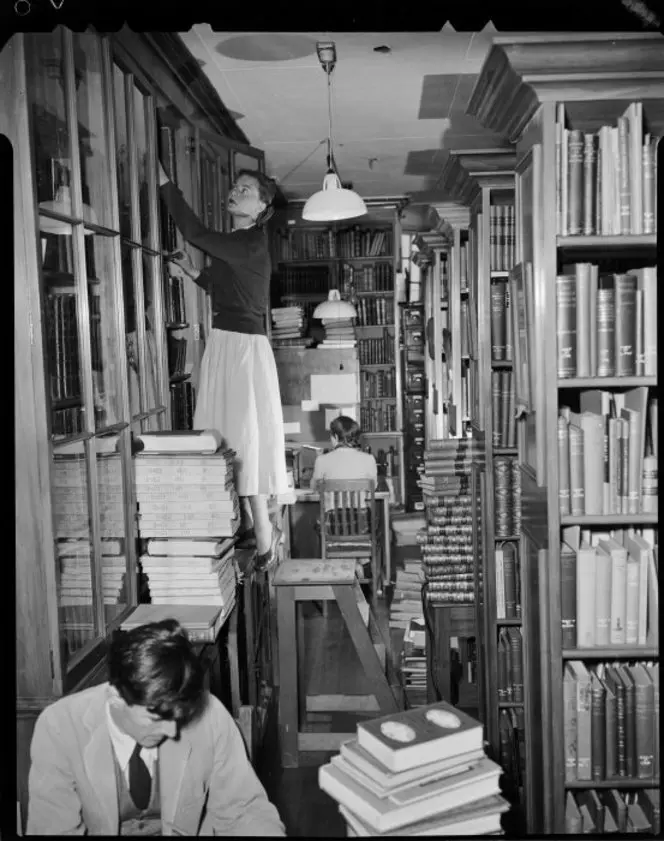
Stack room in the Alexander Turnbull Library, Bowen Street, 1954. Ref: 1/2-005716-F.
Other useful sources
Early Library correspondence is held at Archives New Zealand.
You can find more correspondence by searching Archway for 'correspondence alexander turnbull library'.
AJHRs
Large or unusual acquisitions are sometimes mentioned in the Turnbull Library annual reports, printed in the Appendices to the Journals of the House of Representatives. From 1919 to 1966 these annual reports can be found under section H.22; after this date they are in section H.32, and from 1973 in section G.13. These are available online for 1854 to 1950.
Turnbull Library Record
The Library’s publication Turnbull Library Record often includes a listing or a short article on unusual or important recent acquisitions. Search Index New Zealand for “turnbull library record” and acquisition to find references.
New Zealand and overseas dealers’ catalogues
These are currently uncatalogued, but can be consulted in the Reading Room upon request.
Readers’ books
Use these to see who consulted the Turnbull Library collections during its early years, and the books they read. ‘Readers’ Book’ qMS-0043 covers the years 1920-1928, and provides the name and address of the reader and the author and title of the book requested. qMS-0044 lists readers holding library cards from 1920-1958.
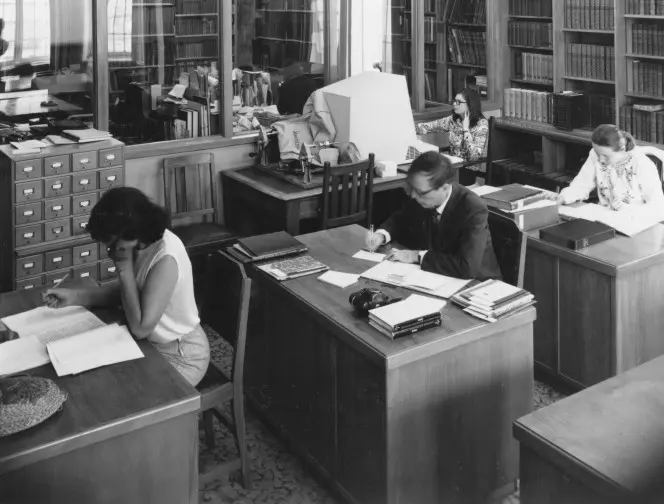
Alexander Turnbull Library Reading Room, 1972. Ref: F49860 1/2.
Tracing owners of books before their entry into the Turnbull
One of the tasks of the book historian is to try to establish where a book has been during its ‘life’.
There are various ways to trace former ownership
bookplates, book labels and book stamps
inscriptions in the book itself
letters or other identifying elements loosely inserted into the pages
sale catalogues and printed or manuscript catalogues of private libraries
armorial stamps on bookbindings
bookbindings that are characteristic of specific owners
A good place to begin is:
David Pearson’s Provenance research in book history: a handbook (London: The British Library, 1994).
Record page
Pearson defines and describes each of the above categories and gives references for further research.
Where you know a name, start by searching Google, as that will often throw up useful leads. Also try searching the National Library catalogue and Papers Past, using different spellings if necessary.
Keep in mind that the Turnbull Library has not recorded provenance information in all its catalogue records. We recommend that you consult the original item or contact us for provenance details. The exception is the Rare Book Collection where provenance features are noted in most books and can be searched online, and part of the Turnbull General Collection, which has a small amount of provenance information added to some of its online records.
Many of the Turnbull Library’s holdings came from the Parliamentary Library. To trace the provenance of these items back further, you’ll want to access their own resources, including 19th century correspondence files, minute books, accession catalogues and donation catalogues. You’ll need to make an appointment with the Parliamentary Library to view these items.
Bookplates, book labels, and book stamps
The following definitions are taken from Pearson, Provenance research (1994).
A bookplate is an ownership label printed from an engraved or etched block, cut in metal or wood. The design is usually armorial or pictorial, and it normally incorporates the owner’s name or initials.
A book label is an ownership label created from printers’ types and (possibly) type ornaments), and printed by letterpress. A common design comprises an owner’s name surrounded by a border of ornaments. Book labels are typically, but not necessarily, smaller and less ornate than book plates.
A book stamp is a stamp made of metal or wood used to stamp an owner’s name in ink on the title page or other leaf of a book. Book stamps can also be perforated.
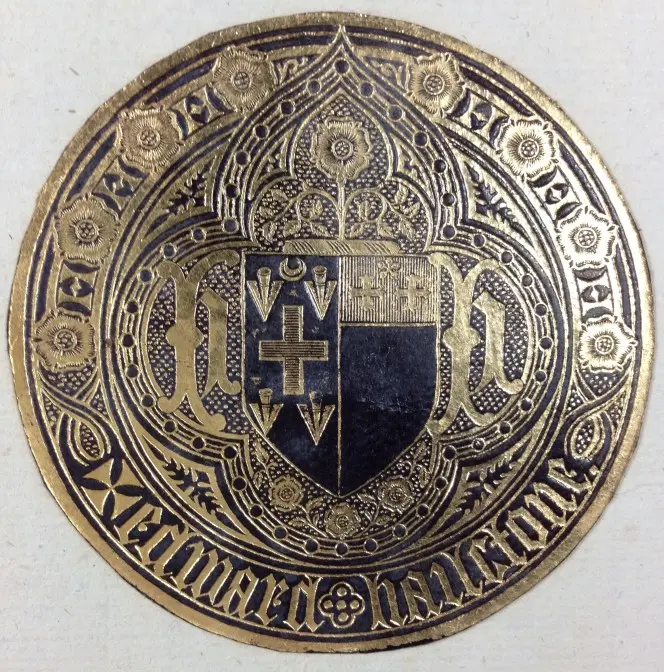
Gilt-stamped leather bookplate of Edward Hailstone. Ref: REng FIEL Auth 1730.
Franks bequest: catalogue of British and American book plates bequeathed to the Trustees of the British Museum by Sir Augustus Wollaston Franks 3 vols. (London: Printed by order of the Trustees, 1903-1904)
Record page
Can be useful for verifying the name and style of a bookplate, but there are very few illustrations.
Charles Elvin, Elvin’s handbook of mottoes, revised edition with supplement and index by R. Pinches (London: Heraldry Today, 1971)
Record page
The standard reference book for mottoes adopted by British families.
L.G. Pine, Dictionary of mottoes (London: Routledge & Kegan Paul, 1983)
Record page
Has a greater emphasis on the mottoes of institutions and military units.
Book Plate Society – Styles
Overview of the principal styles of bookplates in Britain 1600-2000
Bookplate Registry
Around 1100 bookplates and stamps in the collection at the University of Notre Dame, includes a heraldic dictionary
British Library provenance research
If the book contains a British Museum stamp (subsequently the British Library), then you can use this site to establish a reasonably precise date as to when and how the volume entered the Museum.
The study of bookplates, especially armorial bookplates, can require some knowledge of heraldry. The following may prove useful:
Pearson, Provenance research (1994) pp. 274-296
Record page
A good basic introduction. Particularly good are the quick reference illustrations of helmets and coronets indicating rank.

Pearson, Provenance research, p.282.

Pearson, Provenance research, p.283.
Annotated heraldry bibliography
Pimbley’s Dictionary of Heraldry
Ownership and family history
Tracing ownership of books is closely related to family history research. See our family history guide.
The following resources are particularly useful.
British Surnames
Useful site for establishing geographical origins of British family names.
Clergy of the Church of England 1540-1835
Blain Biographical Directory of Anglican clergy in the South Pacific (pdf, 9.8MB)
‘Pre-nineteenth-century British book collectors and bibliographers’, Dictionary of literary biography, vol. 213
Record page
Biographical and other information on British collectors from the 16th century onwards.
‘Nineteenth-century British book-collectors and bibliographers’, Dictionary of literary biography, vol. 184
Record page
Biographical and other information on British collectors in the 19th century, including New Zealand collectors Alexander Turnbull, Thomas Morland Hocken, and George Grey.
Reading old handwriting – Paleography
Tracing provenance usually requires some skill in reading old handwriting. This can be difficult, but there are resources to help with this task.
Tutorials in medieval and early modern palaeography
English handwriting of the 15th to 17th centuries, including tutorials
Reading old handwriting 1500-1800, tutorial
Handwriting in the 1891 census, letter by letter
Mobile apps to practice transcription of manuscripts, from the University of Leeds
Medieval handwriting: App Store (iOS) | Google Play (Android)
English Renaissance handwriting: App Store (iOS) | Google Play (Android)
New Zealand Collectors
A lot of the resources you’d use for family history are useful here, such as the Wises New Zealand Post Office Directories, Births Marriages and Deaths, Electoral Rolls and so on. See the family history guide for more.
Papers Past
This resource can sometimes turn up extra information on a particular collector, such as when his or her collection was sold and how it was sold, as well as other information not recorded in the standard directories and rolls.
Dictionary of New Zealand Biography (DNZB)
‘Members completed forms for the proposed Register of Book Collections’, New Zealand Ex Libris Society, ATL
Record page for surnames A-D | Record page for surnames E-N | Record page for surnames P-W
New Zealand Ex Libris and Booklovers’ Society, A Roll of book collectors in New Zealand (Wellington: New Zealand Ex Libris and Booklovers Society, 1958)
Record page | This book in New Zealand libraries
See this register for collectors active in the 1950s. It is a good idea to consult both sources as not all information submitted by the collectors was included in the published format.
The Library’s publication Turnbull Library Record includes mentions of some collectors and their collections. Search Index New Zealand for “turnbull library record” to find references for many of these articles.
‘Nineteenth-century British book-collectors and bibliographers’, Dictionary of literary biography vol. 184.
Record page
Has chapters on Alexander Turnbull, Thomas Morland Hocken, and George Grey.
Donald Kerr, Amassing treasures for all times (Dunedin: Oak Knoll Press, 2006)
Record page
Provides more in-depth information on George Grey and his collecting.
Books in Maori, 1815-1900: an annotated bibliography (Auckland: Reed Pub., 2004)
Record page
Mentions some early New Zealand collectors.
Catalogues
Catalogues can be useful for tracing when an item was auctioned or offered for sale by a bookseller. They sometimes note the former owner/s or can be devoted to a specific named collector.
Dealers’ catalogues. The Library holds both New Zealand and selected overseas catalogues. These are currently uncatalogued, but can be consulted in the Reading Room upon request.
Manuscript catalogues. Search Tiaki for ‘book catalogues’, ‘library catalogues’ and ‘private libraries’ to bring up three different sets of results.
Bookbinders and bookbindings
Bookbinding is the process of fastening together the text sheets of a work and enclosing them within a protective cover. The cover is usually constructed from boards (wood, later pasteboard or pulpboard), animal skins, textiles, or paper, used singly or in combination, and may or may not be decorated.
Prior to the 19th century all books were issued unbound or in temporary bindings and once purchased were bound by hand by a bookbinder according to the wishes of the purchaser. Each binding is therefore unique. Very few were signed by the binder and the most reliable way of tracing the craftsman is by matching the tools used.
The 19th century saw the introduction of mechanised binding and mass production, resulting in publishers’ bindings – mass produced identical bindings added before purchase and intended as permanent covers. A trade binding is a permanent binding provided by the bookseller prior to selling, and occurred from at least the 1600s.
Dating a bookbinding and tracing the binder, where possible, is all part of the history of a particular book. It can also sometimes provide information on a former owner, especially if there is an armorial stamp on the cover.
Resources
Bookbindings in the Turnbull Library range from the everyday to top of the range. To find examples, search the National Library catalogue using the keyword rbbin (a cataloguing tag from the Binding Thesaurus) and the type of binding.
For example, rbbin ‘vellum bindings’ will find books bound in vellum, and rbbin ‘embroidered bindings’ will find books with embroidered bindings.
You can find some post-1800 cloth bindings in the National Library Catalogue by searching for rbgenr ‘cloth bindings’. However, only a selection have been catalogued to this degree.
For a general overview and as a good starting point:
P.J.M. Marks, Beautiful bookbindings: a thousand years of the bookbinder’s art (London: British Library, 2011)
Record page
An easy to read illustrated introduction to the history and various styles of the art of bookbinding.
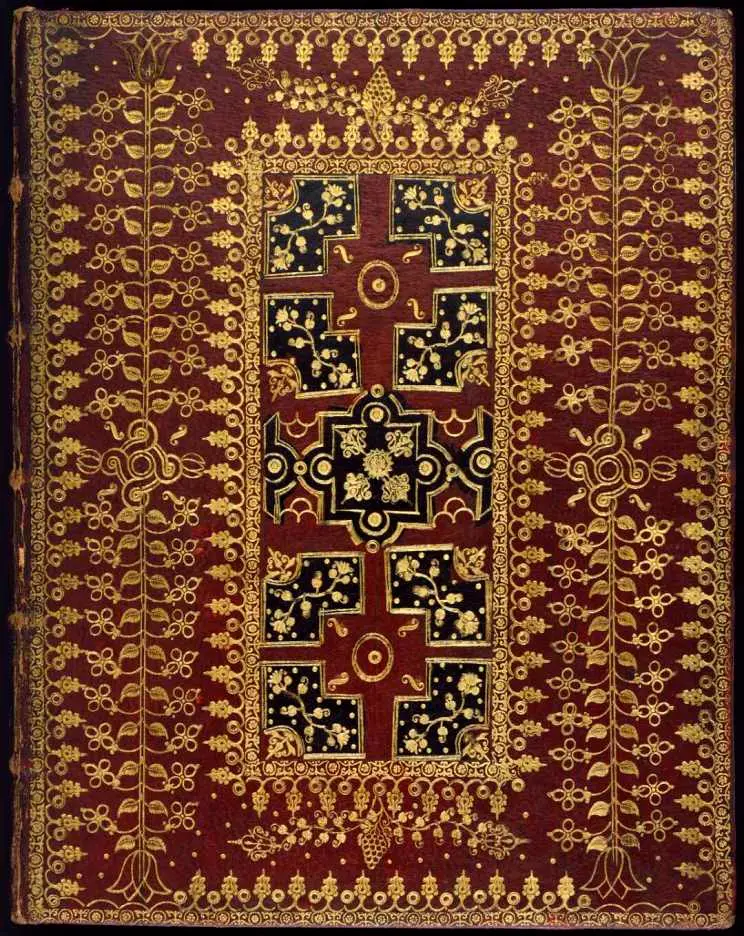
Early 18th century English bookbinding. Ref: REng GAND Glor 1703.
Pre-1800 handcrafted bookbindings
David Pearson, English bookbinding styles, 1450-1800 (London: British Library, 2005; repr 2014)
Record page
Very helpful in verifying and dating English bookbindings made between the middle of the 15th century to the end of the 18th century. Well illustrated (some coloured) with lots of examples. Includes a helpful appendix with a diagrammatic summary of the chronological progression of binding styles.
Mirjam Foot, Henry Davis Gift: A Collection of bookbindings (London: British Library, 1978- 2010), 3 vols
Record page
This contains many black and white illustrations with accompanying descriptive text mainly on Northern European (vol.2) and Southern European (vol.3) bookbindings, but in vol.3 a small number of bindings from Eastern Europe, the Near and Middle East, and the Americas has been added. Volume 1 includes biographical information on known binders. As the study of bookbindings is a relatively recent and fast-growing area of research, terminology is still developing and Foot explains in her introduction to vol.3 some of the changes that have occurred since she began work on this project.
Stuart Bennett, Trade bookbinding in the British Isles, 1660-1800 (London: British Library, 2004)
Record page
Argues that books were not always sold unbound or temporarily stitched with or without paper wrappers. Accompanied by over 200 colour illustrations, Bennett presents new documentary and visual evidence.
Post-1800 machine-made bookbindings
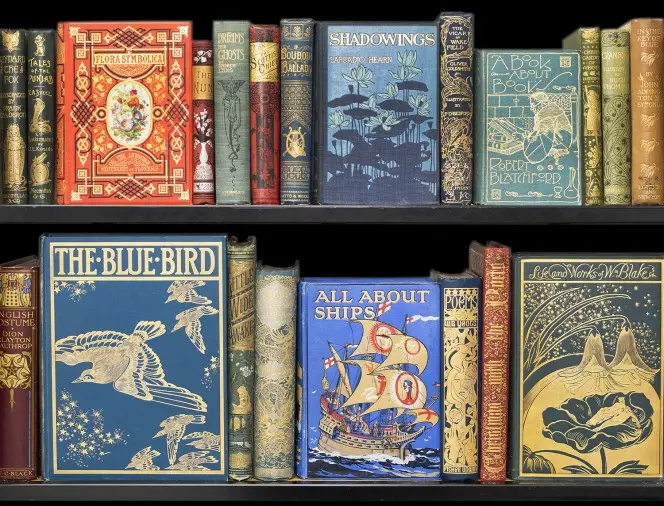
Selection of publishers’ bindings from the Turnbull General Collection.
(//images.ctfassets.net/n3p1o4aq7k6m/4JshOiRb8kaMW4wScc6eui/1db43ef9ca5082cd1916ad6965c95705/blog_victorianbindings_bookshelf.jpg)
Ruari McLean, Victorian publishers’ book-bindings in cloth and leather (London: Gordon Fraser, 1974)
Record page
Shows the richness of publishers’ cloth and leather bindings produced in Britain in the 19th century. Sections on techniques, designs and contemporary criticism. Includes photographs of over 150 examples of publishers’ bindings in cloth and leather (24 in colour)
Ruari McLean, Victorian publishers’ book-bindings in paper (London: Gordon Fraser, 1983)
Record page
Paper bindings between 1800 and 1900 with 200 illustrations (over half in colour). Sections on French Romantic bindings, papier- mâché, children’s books, and fin-de-fiècle and art nouveau.
Ellen K. Morris and Edward S. Levin, The art of the publishers’ bookbindings 1815-1915 (Los Angeles: William Dailey Rare Books Ltd, 2000)
Record page
Emphasises the decorative art of the publishers’ binding. Colour illustrations with detailed descriptions.
Douglas Ball, Victorian publishers’ bindings (London: The Library Association, 1985)
Record page
This book concentrates on cloth bindings during the period 1820-1880, but also includes some reference to covers of paper, leather, and paper mâché. A few black and white illustrations.
More technical and in-depth resources on all periods of bookbinding
Bernard Middleton, A history of English craft bookbinding technique (London: Holland press, 1978)
Record page
Julia Miller, Books will speak plain: a handbook for identifying and describing historical bindings (Ann Arbor, Mich: Legacy Press, 2010)
Record page
J.A. Szirmai, The archaeology of medieval bookbinding (Aldershot, Hants: Ashgate, 1999)
Record page
Other resources
The British bookmaker, Volumes 4-6 (July 1890-May 1893)
Record page
Provides contemporary descriptions in the section ‘Our portrait gallery’, of late 19th-century British binders. Includes information on the binders’ work environments, sometimes with photographic reproductions or diagrams.
Ruth Lightbourne, ‘“I wish you to send it to Zaehnsdorf in London for binding”: Alexander Turnbull and his bookbindings’ Script & Print, vol. 34, no. 1 (2010): 9-33
Read online
About the bookbindings of Alexander H. Turnbull.
British Library Database of bookbindings
Publishers’ bindings online, 1815-1920
Plain and Simple to Grand and Glorious
A selection of 211 bindings held at Princeton University, divided thematically into 26 categories.
British armorial bindings
Database of coats of arms, crests and other heraldic devices that have been stamped by British owners on the outer covers of their books. Includes the armorial stamps of Alexander H. Turnbull.
A fascinating art
A brief introduction to fore-edge painting, with examples from the Turnbull Library collections.
You can find more books by searching for ‘bookbinding history’. This will bring up an excellent but not exhaustive example of what is held along with some extraneous examples. You can filter by subject using the headings on the left hand panel.
Papermaking and watermarks
The paper used in book making includes the papers on which the text is printed and the papers used as endpapers or covers in the bookbinding process. The latter were often decorated papers.
For a short introduction to some decorated papers in the Turnbull see Ruth Lightbourne, ‘Opening up the covers’.
For more, see the following:
Tanya Schmoller, To brighten things up: The Schmoller Collection of decorated papers (Manchester: Manchester Metropolitan University, 2008)
Record page
Provides a good introductory overview of the various techniques. Opens with a forward by Mirjam Foot and a brief history of decorated papers, followed by sections on gold-embossed papers, marbled papers, block-printed papers, paste papers, machine-printed papers, miscellaneous techniques, and oriental papers. Well illustrated with lots of examples.
Richard J. Wolfe, Marbled paper: its history, techniques, and patterns (Philadelphia: University of Pennsylvania Press, 1990)
Record page
In-depth look at marbled papers.
Rosamund B. Loring, Decorated book papers, 4th ed. (Cambridge, Mass: Houghton Library, Harvard College Library, 2007)
Record page
Mirjam M. Foot, ‘The Olga Hirsch collection of decorated papers’ (pdf, 2.2MB)
Papermaking at Hayle Mill, England in 1976 (Youtube 15mins)
Search the National Library catalogue for rbpap paper to bring up a large set of results. Make your search more specific by including the type of paper, for example rbpap ‘marbled papers’.
To get an overview of paper making in New Zealand, see:
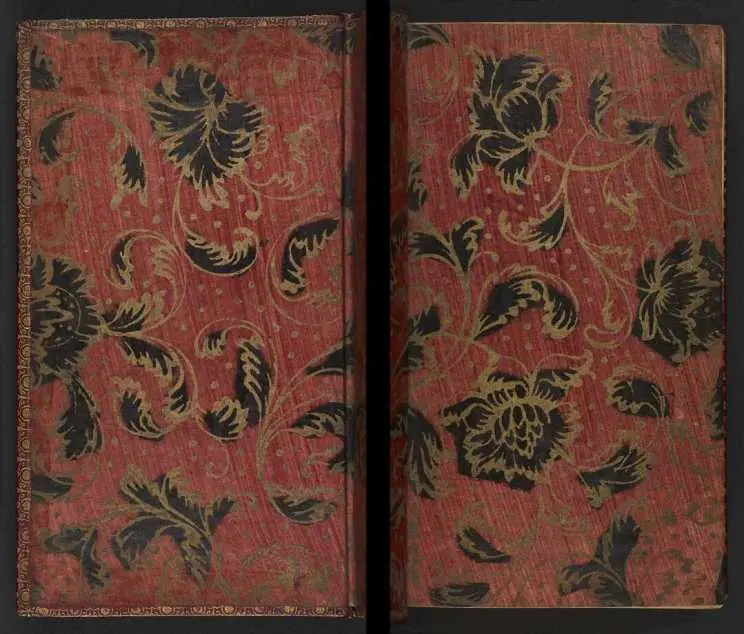
Early 18th century gilt endpapers on a red paste paper ground from Virgil’s Works. Record page.
Verifying watermarks
Watermarks and countermarks are generally found in all handmade papers and less often in machine-made papers. They can be used to verify the maker, place of manufacture, and date of production. The following books provide drawings of watermarks, classified into types (e.g. crescent, coat of arms, foolscap etc) with source information.
Edward Heawood, Watermarks mainly of the 17th and 18th centuries (Hilversum: Paper Publications Society, 1950)
Record page
European watermarks
C. -M. Briquet, Les filigranes (Amsterdam: The Paper Publications Society, 1968), 4 vols
Record page
Watermarks to the end of 1600
Zonghi’s watermarks (Hilversum, Holland: Paper Publications Society, 1953)
Record page
Italian watermarks
Alfred H. Shorter, Paper-mills and paper makers in England, 1495-1800 (Hilversum, Holland: Paper Publications Society, 1957)
Record page
Watermarks in incunabula in the Low Countries
Search the catalogue for “Paper Publications Society” to bring up a list of publications on papermills and watermarks held at the Turnbull Library.
Chronology and dating
Researchers need to be aware of the pitfalls in dating. In England, from about the late 12th century until 1751, the civil, ecclesiastical and legal year began on 25 March, nearly three months later than the change of the historical year on 1 January. In addition, there were other dating conventions, such as the year beginning from 25 December in Anglo-Saxon and Norman times. Eastern dating is based on either the solar or lunar calendar.
Further information and resources for converting dates to modern Western conventions:
Western dating
Various types of dating including the Julian and Gregorian calendars, and civil and historical years.
Eastern dating
Includes Iranian (Persian or Jalali Calendar), and Islamic (Hijiri Calendar).
The book trade
Tracing and dating printers, publishers, booksellers, bookbinders, printmakers, stationers, papermakers, engravers, and others.
Philip A.H. Brown, London publishers and printers c.1800-1870 (London: British Library, 1982)
Record page
William B. Todd, A directory of printers and others in allied trades: London & vicinity 1800-1840 (London: Printing Historical Society, 1972)
Record page
M. Pollard, Dictionary of members of the Dublin book trade 1550-1800 (London: Bibliographical Society, 2000)
Record page
Charles Humphries and William C. Smith, Music publishing in the British Isles from the beginning until the middle of the nineteenth century: a dictionary of engravers, printers, publishers and music sellers, with a historical introduction, 2nd ed (Oxford, Basil Blackwood, 1970)
Record page
British book trade index (BBTI)
An index of names with brief biographical details, of people working in England and Wales who were trading by 1851.
Scottish book trade index (SBTI)
Lists the names, trades and addresses of people working in Scotland up to 1850.
London book trades database
Contains entries for just over 30,000 individuals active in the London book trades from the introduction of printing to around 1830. Emphasis is placed on recording specific events in each individual's life, and on recording the inter-relationships, both familial and professional, within the trade.
Ellic Howe, List of London bookbinders 1648-1815 (London: Bibliographical Society, 1950)
Record page
Charles Ramsden, London bookbinders 1780-1840 (London: Batsford, 1956)
Record page
Charles Ramsden, French bookbinders, 1789-1848 (London: C. Ramsden, 1950)
Record page
Charles Ramsden, Bookbinders of the United Kingdom (outside London) 1780-1840 (London: Queen Anne press for the author, 1954)
Record page
Ellic Howe, Society of London bookbinders, 1780-1951 (London: Sylvan Press, 1952)
Record page
For further into the 19th century and early 20th century, see the microfiche of Kelly’s London Directories, available in the main Reading Room.
For tracing the movement of books through the British auction system from the late 19th century onwards:
Book prices current (vol.1 1887- vol.64 1952-56)
Record page
Lists the prices at which books reached at auction and includes the buyer. At the beginning of each volume is an index of the name of the sale (the name of the owner of the library being auctioned), date of first sale, and auctioneer. There is an index of titles at the end of each volume. There are cumulative index vols for the years 1887-1896 and 1897-1906, and an index to the years 1907-1916. The actual first auction listed in volume 1 is December 1, 1886.
Book auction records vol.1 (1903)-vol.95 (1997)
Record page
Lists titles sold by date, then auctioneer. Gives buyer and price paid. General indices are available for some years 1924-1933, 1963-1968, 1968-1972, 1979-1984. The actual first sale listed in volume 1 is June 3, 1902.
Online catalogues
English Short Title Catalogue (ESTC) | Alternate url
Provides current information on the distribution of all books produced by letterpress in Great Britain or any of its dependencies, in any language, worldwide, from 1473 to 1800.
Incunabula Short Title Catalogue (ISTC)
Lists nearly every item printed from moveable type in Europe before 1501 (excluding material printed entirely from woodblocks or engraved plates) and their holdings. Incunabula (incunables in English), are the earliest books printed in the West, printed between 1450-1501.
Book trade in New Zealand
There is no equivalent book trade dictionary or online index for New Zealand at this stage, but a good starting point is Papers Past, where you can search for booksellers, bookbinders, stationers, auctioneers, libraries etc., as well as specific names that you already know. This will establish when and where these tradespeople and organisations were active.
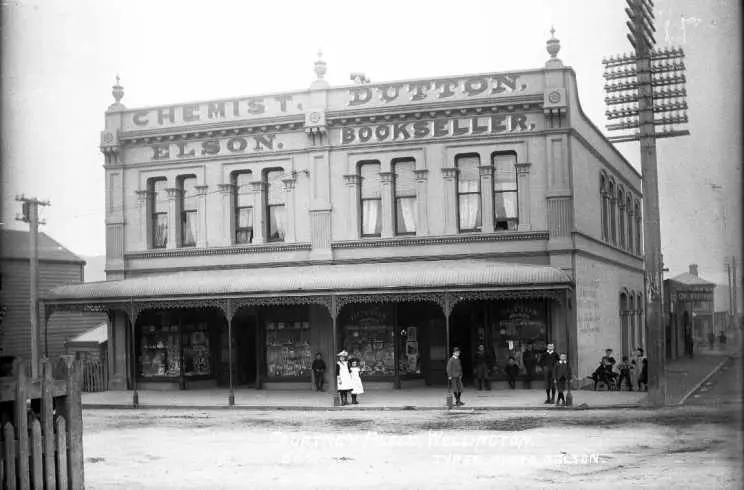
Business premises of Dutton, Bookseller, on Courtney Place, Wellington, in the 1890s. Ref: 1/2-011666-G.
P.A. Lawlor, Books and bookmen New Zealand and overseas (Wellington: Whitcombe & Tombs, 1954)
Record page
Provides personal recollections of various aspects of the booktrade as Lawlor saw it.
The Wellington book trade
Book and Print in New Zealand: a guide to print culture in Aotearoa (Wellington: Victoria University Press, 1997)
Record page | Read online
Contains introductory chapters on the transition from the oral traditions of the Maori to print, printing and production, publishing, distribution, readers and reading, and print culture in other languages.
Guy H. Scholefield, Newspapers in New Zealand (Wellington; A.H. and A.W. Reed, 1958)
Record page
Norman Lloyd McLeod, Wellington prospect: survey of a city 1840-1970 (Wellington: Hicks Smith, 1970)
Record page
K.A. Coleridge and Roderick Cave, Early printing in New Zealand: two papers (Wellington: Dept of Librarianship, Victoria University of Wellington, 1989)
Record page
Kathleen Coleridge, ‘Booktrade advertisements in Wellington newspapers 1840-1859’, Bibliograpical Society of Australia and New Zealand bulletin 18.4 (1994): 199-213
Record page
Kathleen Coleridge, ‘Edward Catchpool, master printer in London and Wellington’ in An index of civilisation: studies of printing and publishing history in honour of Keith Maslen, ed. R. Harvey, W. Kirsop and B.J. McMullin (Melbourne: Monash University, 1993), pp.175-185
Record page
Kathleen Coleridge, Building a paper economy: advertising in Wellington newspapers 1840-1859 (Wellington: Victoria University of Wellington Library, 1991)
Record page | This book in New Zealand libraries
Kathleen Coleridge, ‘Printing and publishing in Wellington, New Zealand in the 1840s and 1850s’ Bibliograpical Society of Australia and New Zealand bulletin 10.2 and 3 (1986): 61-81
Record page
Kathleen Coleridge, ‘Printing in Wellington: the pioneer period’, New Zealand libraries 44.4 (December 1983): 61-65
Record page
W.A. Edwards, ‘Early newspapers: the press of the forties: story of its foundation’ New Zealand history newspaper articles (1921)
Record page
Louis E. Ward, Early Wellington (Auckland: Whitcombe & Tombs, 1929)
Record page | This book in New Zealand libraries
The Steering Committee, The History of Print Culture in New Zealand, History of print culture in New Zealand: interim bibliography (Wellington: New Zealand Academy for the Humanities, 1997)
Record page
Printing, bookselling & their allied trades in New Zealand circa 1900: extracts from the Cyclopaedia of New Zealand compiled as materials towards a history, compiled by D.F. McKenzie and K.A. Coleridge (Wellington: Distributed by the Waiteata Press, 1980)
Record page | This book in New Zealand libraries
Specialist resources
Medieval and Renaissance manuscripts
A manuscript literally means ‘written by hand’ (from the Latin manu scriptus), and refers to a text or document, usually on paper or vellum, which has been written by hand. However, in modern times the term ‘manuscript’ is sometimes used loosely to describe any pre-publication text, and can thus include typescripts or computer print-outs. The word ‘manuscript’ is commonly abbreviated to ‘ms’, or ‘mss’ for the plural form of the word.
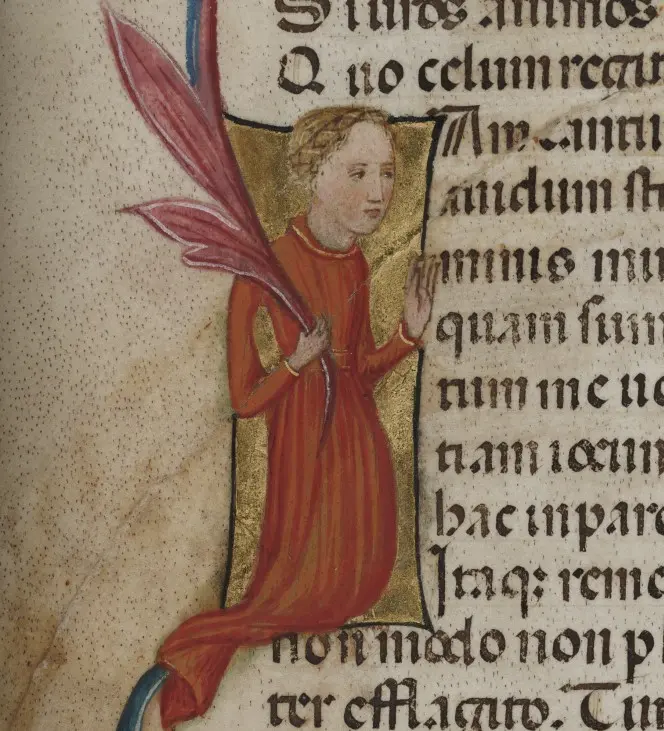
Historiated initial featuring Philosophy in Boethius, Consolatio Philosophiae. Ref: MSR-19, f.24.
Margaret M. Manion, Vera F. Vines and Christopher de Hamel, Medieval and Renaissance manuscripts in New Zealand collections (Melbourne: Thames and Hudson, c1989)
Record page | This book in New Zealand Libraries
Good descriptions of Medieval and Renaissance manuscripts collected and held in New Zealand up to the end of the 1980s.
David M. Taylor, The oldest manuscripts in New Zealand (Wellington: New Zealand Council for Educational Research, 1955)
Record page | This book in New Zealand Libraries
An earlier work on the same subject.
Christopher de Hamel, Scribes and illuminators (London: British Museum Press, 1992)
Record page | This book in New Zealand Libraries
A good basic starting point on how manuscript books were made. Covers paper and parchment makers, ink makers and scribes, illuminators, binders and booksellers.
Christopher de Hamel, The British Library guide to Manuscript illumination: History and techniques (London: The British Library, 2001)
Record page
Has sections on why manuscripts were made, how they were designed, and how they were illuminated.
Peter Beal, Dictionary of English manuscript terminology, 1450-2000 (Oxford, OUP, 2008)
Record page
Helpful for getting to grips with manuscript terminology.
Bernard J. Muir, The making of a medieval manuscript (Melbourne Vic: Evellum, c2008)
Record page
Watch how a medieval manuscript was made using replica processes and tools.
For a more potted version of how a manuscript is made, see:
Making manuscripts - Getty Museum
Embedded content: https://www.youtube.com/watch?v=1aDHJu9J10o
Making parchment
Embedded content: https://www.youtube.com/watch?v=2-SpLPFaRd0
The structure of a medieval manuscript
Embedded content: https://www.youtube.com/watch?v=HKBJkf2xbqI
Finding your way around the text of a Book of Hours or a Psalter can be somewhat daunting. Helpful online resources include:
For examples of manuscripts held elsewhere around the world see:
Scriptorium at University of Cambridge
Database of manuscript miscellanies and commonplace books from c.1450-1720, including research and teaching resources for late medieval and early modern manuscript studies.
Digital Scriptorum
An image database of medieval and renaissance manuscripts intended to unite scattered resources from many institutions into an international tool for teaching and scholarly research.
Incunabula: tracing usage and ownership
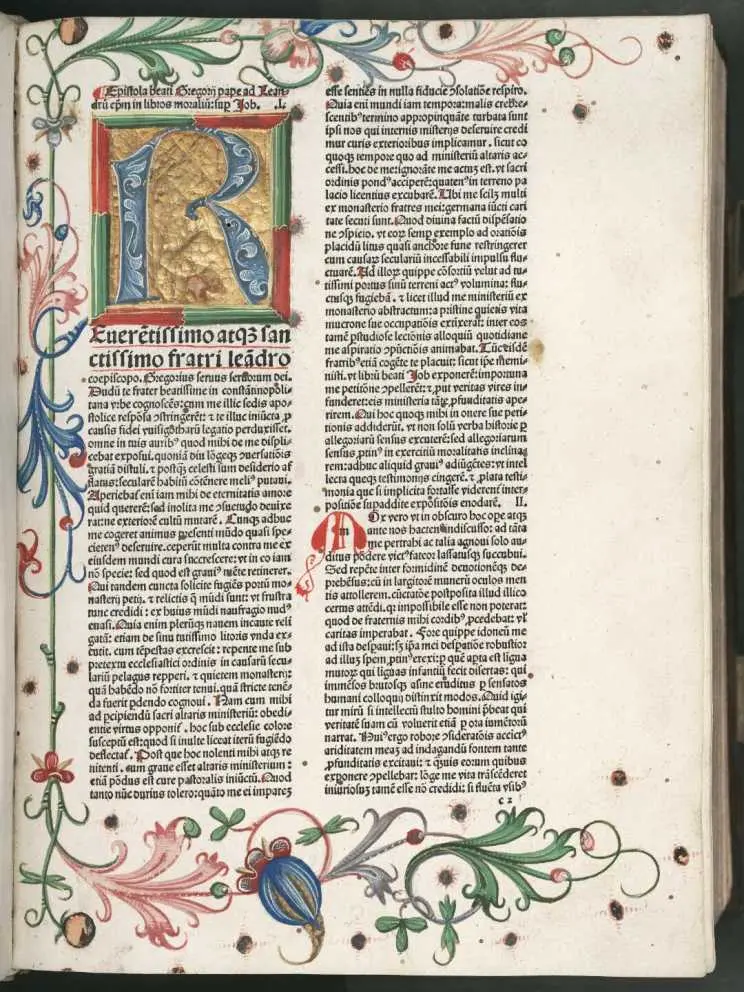
Leaf c2r in Gregory 1, Moralia in Job, Venice, 1480. Ref: qRInc GREG Mora 1480.
Incunabula (incunables in English) are the earliest books printed in the West, printed between 1450-1501. The regularly updated online database ISTC (Incunabula Short Title Catalogue) has already been mentioned above.
Historical sources of New Zealand holdings
1922 list of incunables in New Zealand
Held in Alexander Turnbull Library – J.C. Andersen system, Inward & outward correspondence, 1921-1924, at Archives New Zealand
Record page (AAOJ 6036 Box 1b)
An early list of incunables held in New Zealand can be found at Archives New Zealand This was compiled by Johannes Andersen, first Librarian of the Turnbull Library, for the German Government’s worldwide census. The list is dated 25 August 1922 with two supplementary lists dated 3 August 1923. It is part of a file of Andersen correspondence.
Celsus Kelly, ‘Franciscan scholarship in the Middle Ages: A statistical account of fifteenth-century printed books in Australian and New Zealand libraries’, The Catholic Review 5, no.3 (June 1949): 136-214
Record page
A first census of incunabula in Australia and New Zealand, compiled by H.G. Kaplan (Sydney, Trustees of the Public Library of New South Wales, 1966)
Record page
Ruth Lightbourne, ‘“Where did they come from?”: Incunabula in the Special Printed Collections of the Alexander Turnbull Library’, Turnbull Library Record 41 (2008): 10-35
Record page
Information on Turnbull Library incunables.
Still want more?
The art of making a Book
Embedded content: https://www.youtube.com/watch?v=T17aCX2iBBY
Acknowledgements
Guide created by Dr Ruth Lightbourne.
Reviewed by Dr Sydney Shep, Dr Donald Kerr, and Catherine Amey.
Edited by Reuben Schrader.